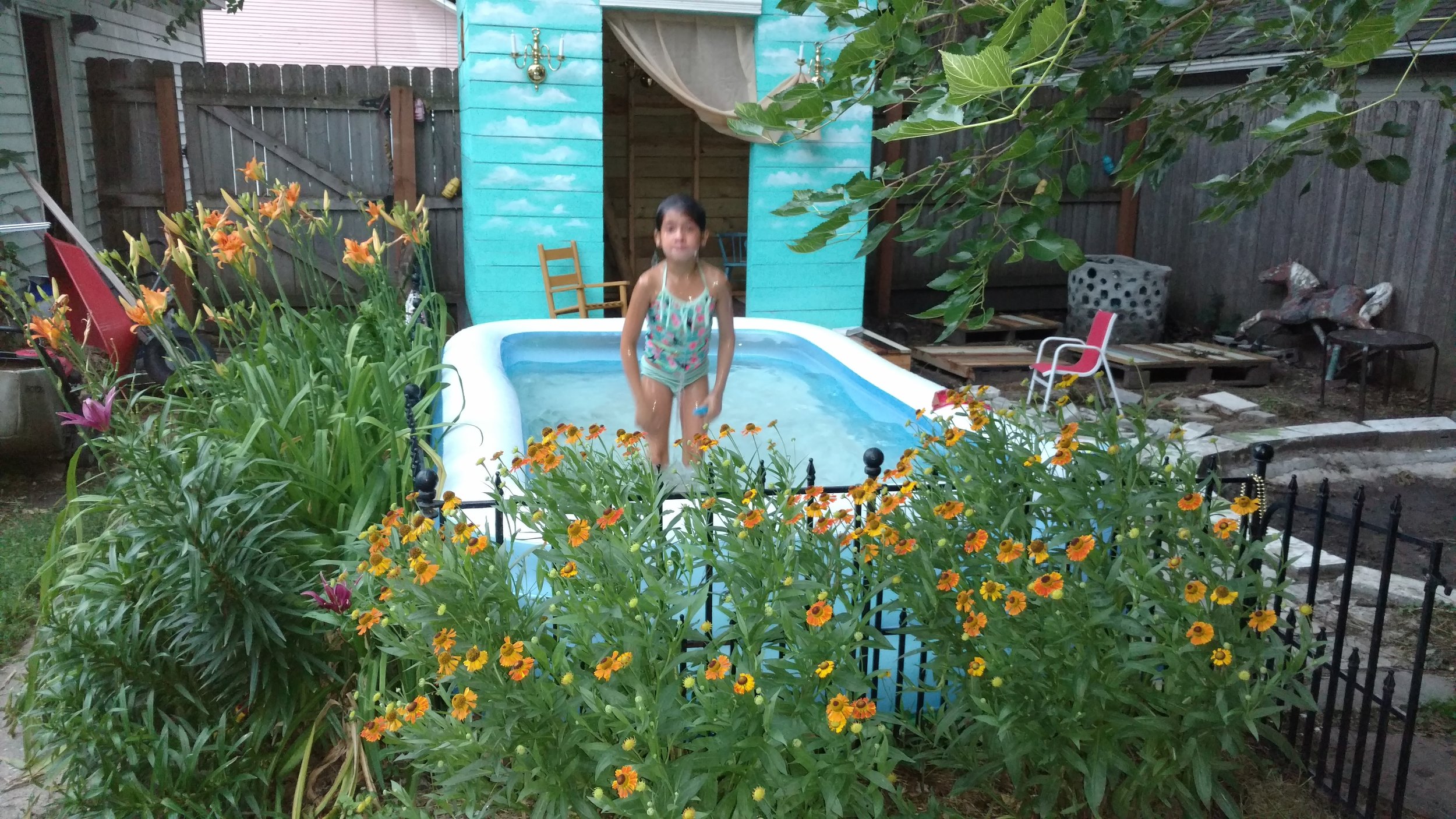How to Keep the Kiddie Pool Clean All Summer Long
/Updated March 1, 2025
Every year, I swear this will be the last time I have to buy the inflatable kiddie pool pictured above, because this year, I will dutifully keep it white 'n' bright. At the end of the season, I'll dry it out, fold it up, and store it for next year instead of furtively and guiltily dragging it to the curb, leaving behind an oozing trail of slimy green, stagnant water.
The thing about this inflatable kiddie pool is that it's 10 feet long, so you can't just flip ‘er over and spray ‘er down real quick every time the water gets gross. Cleaning this pool is a production that involves two grown-ass adults arguing over who has to hold the pool up sideways and who gets to spray it down with the garden hose. Pool water can turn green and gross very quickly, so the cleaner you can keep it, the fewer times you’ll need to empty, clean, and refill the pool.
Here, I’ve compiled a list of tasks and products that can help you keep your pool water clean ‘n’ safe all summer long. If you click on a link to a product, I may earn a small commission. I only recommend products I've either purchased or would purchase, which means they're rated at least 4 out of 5 stars, have solid reviews, and appear to be the best bang for the buck!
1. Put the pool in the right spot
Where you set up your kiddie pool can make a big difference in how clean it stays. Here are a few things to consider when choosing the perfect spot:
Shade. Direct sunlight heats up pool water fast, which increases bacteria growth. To reduce the amount of direct sunlight the pool gets, set it up in a shady spot. If there’s no naturally shady spot in your yard, you can set up a shade sail, cantilever umbrella, or pop-up canopy to protect the pool — and your child’s skin — from the sun.
Surface. If you can, set up the pool on the patio or deck to help prevent grass and dirt from being tracked into the pool. Alternatively, lay down a clean barrier, like a large tarp, on top of the lawn or other surface to help keep the area around the pool free of dirt and debris. You can even build a simple pool platform out of wood — lay down artificial grass or interlocking foam tiles for padding.
Surroundings. To help keep leaves, bugs, and other flotsam and jetsam out of the pool, avoid placing it underneath a tree if you can. If you can’t, be sure to cover the pool when it’s not being used.
2. Post the rules
How the kids use the pool has a big impact on how dirty the water gets — and how fast. Lay down a few simple rules before swim season:
Step into a bucket of clean water to rinse feet before getting in the pool.
Rinse off any pool toys that have sand, dirt, or grass on them.
Keep food and drinks out of the pool.
Don’t pee in the pool (good luck with that one, lol).
If possible, don’t allow pets in the pool. If Doggo wants to play too, get him a doggie splash pad!
3. Cover the pool when it's not in use
A pool cover keeps grass, dirt, and other debris out of the water. Perhaps most importantly, though, a pool cover blocks direct sunlight, which is a key ingredient for the growth of algae and speeds up evaporation of the water. It also keeps out the rain, which can contaminate the water.
Intex sells a rectangular kiddie pool cover that's made for our big inflatable pool, but it’ll fit any pool of roughly the same size. They also sell a one-size-fits-all round cover for the Easy Set pool and other round kiddie pools. These covers are easy to secure tightly around the pool, so they won’t flap in the wind or sink to the bottom of the pool when it collects too much rain water, like homemade tarp-and-bungee cord covers are wont to do.
Hot tip: Rinse the pool cover with the garden hose before you remove it if there's lots of debris on it.
4. Skim the pool every day
No matter how hard you try to avoid it, grass, sand, dirt, and leaves inevitably blow into the pool or get tracked in by dirty feet. Having a skimmer of some sort on hand makes quick work of getting all this debris out. I've used these inexpensive butterfly nets to remove debris from Ruby's pool, and they work fine for most of the bigger stuff that gets in the water. They come in a pack of four, so everybody can skim! They also work great for catching fireflies and butterflies.
If you prefer the real deal, this HydroTools pool skimmer picks up smaller stuff, like the sand, dirt, and other gritty stuff you scare up off the pool floor. It's got an aluminum handle that's short enough that the kids can skim while they swim, and it telescopes to 12 feet so you can skim at a distance.
5. Vacuum the bottom of the pool
While regular skimming removes some of the sand and other smaller debris at the bottom of the kiddie pool, it won't catch all of it. For that, you need a filter pump or a pool vacuum. Pool vacuums can get ridiculously expensive (and most don’t have very good ratings or reviews), but this Intex pool maintenance kit includes a pro skimmer and a vacuum powered by the garden hose — no batteries or electricity necessary! It’s earned 4.4 stars with over 6,000 reviews, the majority of them positive.
Here are three more pool vacuum options, raging in price from a little north of twenty-five bucks to a little over a hundred.



